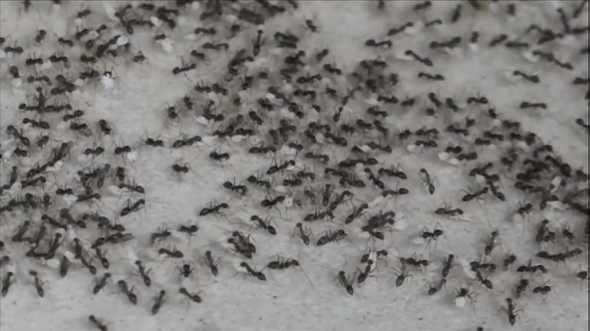For some reason or other masses of ants swarmed out of the bottom of my large flower pot. They were moving house after they found another more suitable one. This was a nearby flower pot, where they entered through the bottom drainage holes. Now why do ants move house? It may be because the current nest is too small to hold the increasing population. Or that the nest is too dry or too wet?

Among the mass of ants are a few larger ones, the soldiers. These soldiers are the first line of defence. The second line consists of the more numerous but smaller workers. Many of the workers help transport the colony’s young, carrying them in their jaws – eggs, larvae, pupae and newly hatched individuals. These young make up the colony’s future and need to be safely transported to the new home. But there are much more worker ants that those carrying the young and these help in defending the colony too.
Moving house can be risky to the ants as the eggs, larvae and pupae are potential rich food to predators from frogs and toads to lizards and birds.
Once the ants settled in their new home, the workers will take up their usual duty of maintaining the colony – sourcing food, feeding the queen, etc.
There were no queens in the mass of moving ants. Maybe they will be escorted later on when the new colony is more established. After all, the queen or queens are the life of the colony. They are the eggs producer that provide the workforce of the colony as well as future queens and kings.
The following links provide more information on ants LINK; LINK; and LINK.
YC Wee
Singapore
24th January 2018









2 Responses
Surprisingly there is little scientific literature on this phenomenon which occurs commonly. It is generally said in rural India that ants move when there is likelihood of rain. This is true in some cases and some studies indicate that ants can detect differences in vapour deficit pressure. Many common phenomena in nature are yet to be answered by science!
Rain, especially heavy and prolonged rain, may flood the nest and makes moving house necessary. Yes, there is a need for more research in this area. Thanks for the comment.